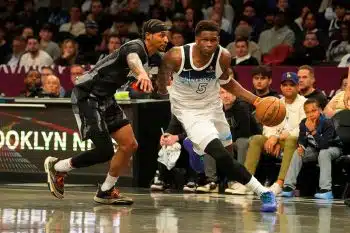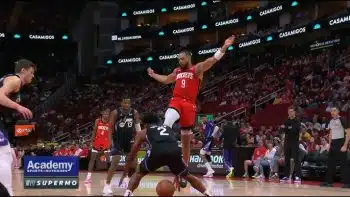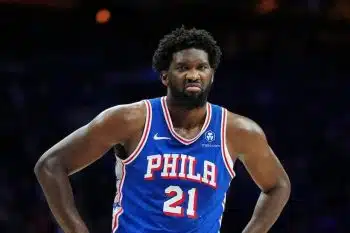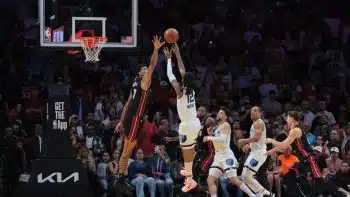NBA
NBA PM: Buying Time While Stars Rest
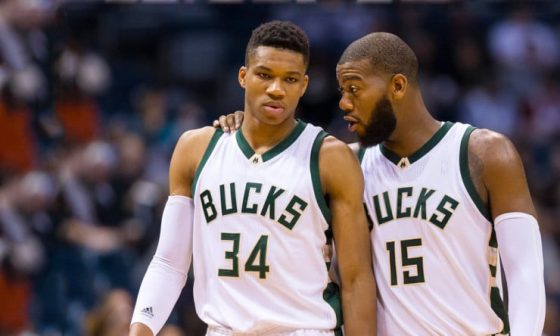
Star players are the largest single factor driving NBA success, a reality that’s only magnified in the playoffs. You don’t win a ring without one, and even that well-worn turn of phrase isn’t specific enough; non-Spurs title winners over the last decade have really only featured the same handful of superstar players at the helm.
A star’s on-court impact is under an even greater microscope in a hyper-focused playoff environment, meaning the flip side is naturally true as well: Any minutes with a team-driving star off the floor become opportunities for the opponent to gain an advantage.
These minutes are reduced in the playoffs as rotations tighten, but even the biggest names in the game have to sit for a couple stretches every night. In some cases, these non-star stretches are like walking on eggshells for a coach; simply praying nothing cracks too badly before you get to the other side.
One solution that’s long been used by savvy bench bosses, and might be finding a bit more popularity around the league: Utilizing pace.
Pace has occupied an interesting corner of basketball analytics since metrics like it became more popular within the last decade. It’s been used as an offensive weapon, first by Mike D’Antoni’s mid-2000s Suns and then, more recently, by the juggernaut Warriors. Other teams have mined the opposite end of that spectrum, possibly with the Dubs directly in mind.
In the end, the actual “pace” statistic housed on NBA.com and elsewhere – simply the number of possessions in a 48-minute span – isn’t much of a singular indicator of anything. Every year we see certain fast-paced teams succeed offensively while slower ones fail, but we see roughly just as many cases where the opposite is true.
That doesn’t mean pace can’t be used as a tactical weapon situationally, though, and the postseason offers a few good examples.
Take Milwaukee, for instance. The Bucks are worse when Giannis Antetokounmpo isn’t playing – nearly a four points per-100-possession gap during the regular season, which is actually a little less egregious than you might expect. Given team construct, however, it’s no surprise that this number is badly magnified during the postseason, where the Bucks have very few other individual players capable of consistently generating the sorts of advantages Giannis does regularly. Toronto has outscored Milwaukee by over 16 points per-100 without Antetokounmpo on the floor so far this postseason.
That sounds much worse than the actual raw impact, though. Since Giannis has only spent 15 minutes off the court in the series, it only actually equates to an eight-point gap in the Raptors’ favor when he’s on the bench. Being outscored by a point every two minutes certainly isn’t good, but it feels more manageable when there are only a couple short stretches like that per game. And the thing is, it could be worse without pace considerations.
The Bucks actually played a little faster without Antetokounmpo on the floor for the regular season, but that’s reversed since the playoffs started. They’re playing about three possessions per-48 slower when he sits – this isn’t a huge gap, but it’s still noticeable.
The Bucks have run their non-Giannis offense almost exclusively through Greg Monroe and Khris Middleton, each of whom has played 14 of the 15 minutes Antetokounmpo has sat. Milwaukee often sets up Monroe or Middleton at the high elbow, then runs a series of actions around them. If they find easy points laying around, then sure, they’re taking them.
Sometimes they’ll run early pick-and-roll action – again, hunting for easy points if they’re available. If nothing materializes, though, they simply go to work individually, attacking the few small mismatches the Bucks might have on the court.
Monroe misses the layup here, but it’s one he often makes. More importantly, note a couple vital items.
For one, the possession takes virtually the entire shot clock; this isn’t happening every time, of course, but the Bucks are clearly in no hurry if they can’t generate a great look early in the clock.
For another thing, this kind of Monroe attempt is “safe” for Milwaukee going the other way. All four other Bucks on the floor can get back on defense, eliminating any potential transition opportunities and controlling the tempo. The Bucks have allowed zero fast break points with Giannis on the bench in two games against Toronto, forcing the Raptors to walk the ball up and play against a set defense every time down the floor.
Are the Bucks essentially buying time for Giannis during these minutes?
Look, nothing in the NBA is that cut-and-dried, and that’s certainly not the message from Jason Kidd to his locker room. NBA players didn’t work their entire lives just to function as a buttress; you wouldn’t get much out of them if you outright admitted that their minutes were just a race against the clock before better guys could come back on the court.
Kidd can still make adjustments with the theme in mind, though, and it seems like this is exactly what’s happening. Giannis only has to sit for four or five minutes per half, so extending every possession a few seconds longer than average – and trying your hardest to force the opponent to do the same – can make a real difference. If you’re falling behind by a nearly a point for every five possessions, like the Bucks are without Antetokounmpo against the Raptors, shaving a few possessions off every time he sits down starts to sound like a good idea. There are ways to encourage it without explicitly demanding it out of players.
Other teams have showcased similar lines of thought. The Washington Wizards’ starting lineup played nearly 500 more minutes than any other five-man unit in the league during the regular season, an obscene gap. That naturally means they played a lot of platoon-style bench units with all their best players off the floor.
Whether explicitly intentional or not, those bench platoons played a lot more slowly than the starters, which is good because they were a train wreck when John Wall or Bradley Beal was off the floor. They got uncharacteristically sped up in the second half of Game 1 against the Atlanta Hawks, which they had well in hand, and it nearly cost them the game before Beal’s hot shooting and some Wall heroics pushed them over the top. They were back in character for Game 2 (head coach Scott Brooks has also done a bit more staggering in the playoffs so far).
The knife cuts in the other direction, too. Are the Clippers making a concerted effort to slow the game down when Chris Paul sits (they didn’t in the regular season), or are the Jazz – a molasses-level slow unit across the board – leaving points on the board by failing to up their tempo while CP3 is out of the game?
The 15.6 points per-100 by which Utah is outscoring L.A. while Paul sits may sound like a lot, but when it’s just 26 of these minutes, at a glacial 88 pace? That’s actually only a minus-four over two games.
The same could be said for the Indiana Pacers. They’ve only had 11 minutes without LeBron James on the floor so far in two games, so the sample is extra small, but they haven’t sped things up at all in either game despite the Cavs’ total ineptitude without James. Indiana lost by one point in Game 1, a game in which they gained nearly a full point for every two possessions LeBron sat on the bench. Basketball isn’t quite this linear, but if they could do it over again, you think maybe they’d try to eke out a few extra possessions during those minutes?
To be clear, this isn’t some revolution that’s swinging a postseason series. There’s no way of knowing whether even a single playoff game we’ve seen so far could have swung if one team or the other took a different approach here, and honestly, the answer is probably no.
The margins aren’t large in the NBA playoffs, though, and these coaches know it. If you can add half a point to your expected total for a game by tweaking your approach a little, you do it. Stars can’t play the whole game, and teams who rely on a singular driving force could be down the right track in looking to minimize the damage that’s done when that force has to sit down.

